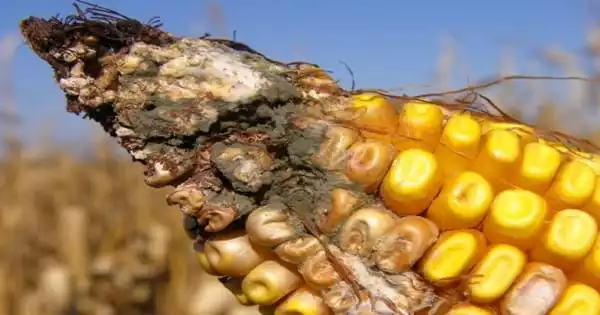Industrial agriculture has harmed the environment and society worldwide for many years. Plant and animal species are vanishing, and soils have worsened. Small-scale farmers are having difficulty, and landscapes are being destroyed. It’s not surprising that we’re seeking for more ethical and sustainable methods of producing food and fiber.
One alternative that is getting a lot of attention is regenerative agriculture, particularly in wealthy, industrially advanced nations.
The term “regenerative agriculture” was coined in the 1970s. It is usually considered to refer to farming that enhances rather than impairs ecological processes, including the cycles of water, nutrients, and carbon.
Large-scale food corporations, advocacy organizations, and some segments of the farming community are currently vigorously pushing regenerative agriculture. And the Netflix documentary Kiss the Ground features celebrity activists promoting the regenerative agriculture movement.
However, as our most recent study demonstrates, regenerative agriculture might not be the change our world’s food system needs.
Farming must change
About 20-40% of the global land area is degraded. In recent decades, agriculture has been responsible for 80% of worldwide deforestation and 70% of freshwater use. It is the main cause of biodiversity extinction on land and has a large impact on greenhouse gas emissions.
Global corporations such as Nestlé, PepsiCo, Cargill and Bayer dominate the food system. Just four companies own some 70% of the global agrochemicals market and 90% of global grain trade is dominated by four businesses. This gives these corporations immense power.
Numerous small-scale farmers, particularly those in less wealthy and developed nations in Asia, Africa, and Latin America, struggle to compete in the global market. These farmers frequently incur debt to purchase costly machinery and chemicals to increase productivity in an effort to keep up.
What’s regenerative agriculture?
Regenerative agriculture is proposed as a more sustainable alternative to industrial agriculture. It can include practices such as:
- integrating livestock into cropping systems to replenish soil and reduce the cost of animal feed and fertilizer
- leaving soil undisturbed and covered with plants to retain carbon, moisture and nutrients and reduce erosion
- regularly moving livestock between paddocks to give pasture a chance to recover
- using less synthetic chemicals in farming.
But can regenerative agriculture transform the global food system? Our research examined this question.
Our research findings
We explored the origins and current status of regenerative agriculture. We then compared this to other sustainable farming approaches: organic agriculture, conservation agriculture, sustainable intensification, and agroecology.
We discovered that regenerative agriculture and the first three movements above had a lot in common. Most importantly, it originated in the rich, industrially developed Global North, primarily North America, Australia, New Zealand and the United Kingdom.
This means the movement often fails to credit Indigenous practices it draws from. Additionally, it has a propensity to ignore the needs of farmers in the Global South and more generalized power disparities in the food chain.
Regenerative agriculture is becoming more and more accepted by corporations, just as some other movements. Nestlé, for instance, aims to source 50% of its key ingredients through regenerative agriculture by 2030.
Regenerative agriculture may be used by businesses to “greenwash” their image, according to some worries. For example, experts warn corporations could be using the term to repackage existing commitments, rather than substantially improving their systems.
Agroecology: A different path
We also found that regenerative agriculture is threatening to marginalize another promising sustainable farming movement: agroecology.
Agroecology combines agronomy (agricultural science) and ecology, and also seeks to address injustice and inequity in food systems.
The movement is associated with the world’s largest smallholder farmer organization, La Via Campesina, and has been endorsed by the United Nations.
Agroecology supports small-scale farmers and promotes Indigenous knowledge and land rights. It aims to combat corporate dominance, neoliberalism, and the globalization of food systems.
Some scientists wonder whether agroecology alone can feed a burgeoning world population. But 80% of the world’s food, in value terms, is produced by small family farms. And globally, we already grow enough food to feed ten billion people. How that food is distributed, how much of it is wasted, and how much of it is turned into ultra-processed foods and other goods like biofuels are the problems.
Agroecology brings many benefits to farmers and communities. An agroecology project in Chololo village in Tanzania, for example, saw the number of households eating three meals per day rise from 29% to 62%. Average household income increased by 18%. The average period of food shortage shortened by 62% and agricultural yields increased by up to 70%.
However, the agroecology movement is frequently ignored because of its roots in the Global South and its opposition to corporatization. Affected farmers may feel ignored at events like the UN Food Systems Summit, where corporate stakeholders influence policy decisions.
Transforming our food systems
Despite its popularity and emphasis on sustainable food production, regenerative agriculture does not address systemic social and political problems. As a result, rather of changing the food system, the movement might simply maintain status quo.
But our food system includes many landscapes and cultures. This indicates that while it is not a universal solution, regenerative agriculture could nonetheless help more sustainable farming in some contexts.
Additionally, advocates of regenerative agriculture have urged a change in the movement’s priorities, emphasizing equity, justice, and diversity. Therefore, there is still a chance that the movement will help stop industrial agriculture.
















